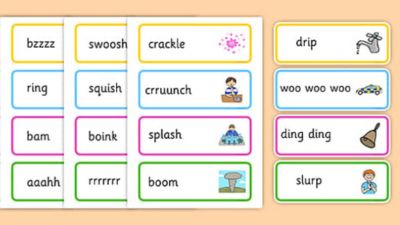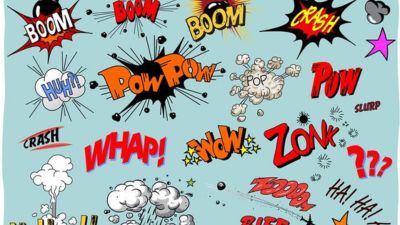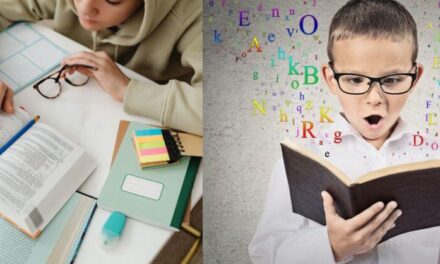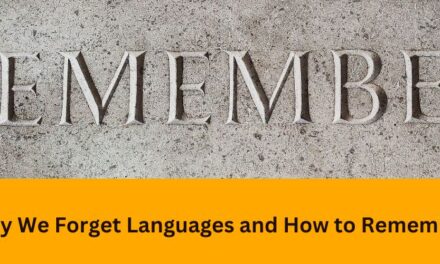What is Onomatopoeia? A Complete Guide to Its Usage with Examples
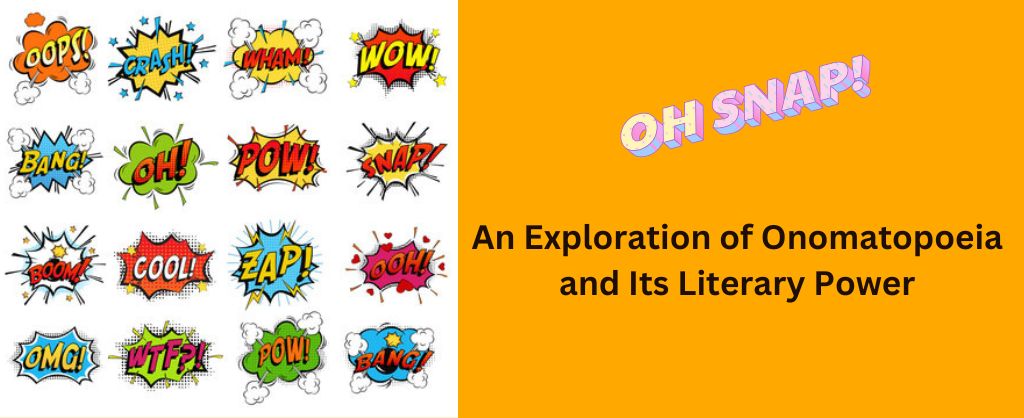
Onomatopoeic words are uniquely expressive parts of language that mimic the sounds they describe. These fun, creative words evoke auditory and sensory associations that bring writing to life.
Onomatopoeia shows the versatility and imagination of language.
Topics Covered in this article:
- What Are Onomatopoeic Words?
- Examples of Onomatopoeia Across Languages
- The Rhetorical Uses of Onomatopoeia
- Onomatopoeia Across Cultures
- Common Sounds Expressed Through Onomatopoeia
- Differences Between Onomatopoeia and Mimetic Words
- Onomatopoeia in Sign Languages
- Tips for Creating Onomatopoeic Words
- Onomatopoeia in Literature and Poetry
- Benefits of Using Onomatopoeia
- The Neuroscience of Onomatopoeia
What Are Onomatopoeic Words?
Onomatopoeic words are words that phonetically sound similar to the actual sound they are representing. The pronunciation of the word imitates the sound it is describing. Some common examples in English include:
- Bang – the sharp sound of impact
- Boom – the loud reverberating blast of an explosion
- Crack – the sudden snap of something breaking
- Fizz – the bubbly hiss of gases escaping
- Pop – a quick bursting sound
- Snap – a brisk click or crack
- Sizzle – the vibrant hiss of something frying or boiling
- Whir – the rapid droning sound of quick movement
How to Inspire and Connect Through Powerful Communication
These words don’t just symbolize the sounds, they actively imitate them through their pronunciation and phonetic qualities. Saying the word “bang” out loud recreates some of the sensation of an actual bang.
Onomatopoeic words are formed in ways that mimic sounds using particular rhythms, phonemes, and vocal techniques to recreate the original auditory experience.
This gives language the ability to evoke sensations and associations beyond just literal meanings.
The word “onomatopoeia” itself contains clues to its own meaning. It’s derived from the Greek words “onoma” meaning name and “poiein” meaning to make.
So onomatopoeia literally means “to make a name for a sound.” True to its own terminology, the word uses phonemes like the “p”, “t”, and “p” to sound like what it represents.
This creative use of language creates words that are highly expressive, fun, and vividly descriptive. Onomatopoeia taps into people’s auditory imagination using linguistic mimicry.
Examples of Onomatopoeia Across Languages
While onomatopoeic words take unique forms in every language, the concept exists across cultures. Here are some examples of how languages imitate sounds through speech:
English:
- Meow – the plaintive cry of a cat
- Buzz – the noisy vibration of bees and insects
- Tweet – the chipper call of a bird
- Boing – the bold reverberation of a spring
- Splash – the abrupt sound of something hitting water
Spanish:
- Miau – a cat meowing
- Zumbido – the droning buzz of an insect
- Pío – the singsong chirping of birds
- Plaf – the sudden thud of something heavy falling
- Chasquido – the sharp click of a snap
French:
- Miaou – a cat’s meow
- Bourdonnement – the low hum of a buzz
- Cui-cui – the cheery song of birds
- Crac – the jarring noise of something breaking
Japanese:
- Nyan – the pleading meow of a cat
- Būn – the drone of buzzing
- Piyo – the lyrical trilling of songbirds
- Poka – the hollow knock of light impact
- Bachi – the harsh crack of shattering
Mandarin:
- Māo – a cat’s meow
- Wēng – the whirring buzz of insects
- Jiǎo – the cries of birds
- Pēng – the blunt thud of collision
- Kā – the sharp crack of fracture
The specific words used to describe the same sounds vary across languages. But the creative use of vocal sounds to mimic noises is consistent throughout the world.
Onomatopoeia reveals the relationship between sound sensation and oral articulation. It shows how diverse cultures arrive at different words to recreate similar acoustic experiences.
Here are some additional examples of onomatopoeic words that express emotions in other languages:
- Spanish: “ayyy” to express tenderness, joy, surprise or excitement. The more Ys, the more intense the emotion.
- French: “miam” to express that something is tasty or yummy. It imitates the sound of enjoying food.
- Japanese: “kirakira” to express that something is sparkling, shining or twinkling.
- Mandarin Chinese: “aiyo” to express physical pain, surprise or complaint.
- Italian: “uhhh” to express pleasure from tasting delicious food.
- Portuguese: “ai” to express surprise, joy, sadness, complaint or lament.
- Russian: “okh” and “akh” to express sudden physical pain.
- Arabic: “waaw” to express surprise or amazement.
- Korean: “bbo bbo” to express being touched or emotionally moved.
While onomatopoeic words take unique linguistic forms across languages, they share some universal cognitive underpinnings:
- Imitation – They mimic sounds through phonemes
- Iconicity – The words physically resemble the sounds
- Mimesis – They recreate the sensation of sounds
- Synesthesia – They evoke sensory associations
- Analogy – Sounds are analogous to vocal sounds
These cognitive mechanisms allow the human mind to translate sounds in the physical world into vocal vocabulary. Onomatopoeia illustrates the imaginative capacity of language.
The Rhetorical Uses of Onomatopoeia
Beyond just descriptive words for animal noises, onomatopoeia serves many creative rhetorical functions:
Expressiveness – It gives voice to hard-to-describe sounds. A word like “crash” conveys a complex acoustic experience.
Vividness – Onomatopoeic words paint multi-sensory images using verbal mimicry. Words like “bang” and “zap” create strong impressions.
Energy – The brisk, sharp sounds used in onomatopoeia convey vigor and dynamism. Words like “bam” and “wham” feel active and bold.
Texture – Skillful use creates auditory and even tactile textures. Words like “slither” and “ooze” give writing multi-layered richness.
Rhythm – Onomatopoeic words contribute cadence and tempo through stressed syllables. “Tick-tock” creates a steady beat.
Tone – Sounds set emotional tones through words like “sizzle” or “thud” that imply moods.
Characterization – Choices of sounds can reveal traits about characters based on their manner of speaking or moving.
Atmosphere – Sounds create environments through words like “crackle” or “gurgle” that establish ambience.
As a rhetorical device, onomatopoeia not only describes sounds but also constructs realities using creative language. It engages audiences by appealing to their auditory imagination.
Unique Examples of Onomatopoeia
While many onomatopoeic words represent common sounds, the flexible nature of language allows for continual expansion of the onomatopoeic lexicon.
Here are some more unique examples:
- Slosh – the wet squelching sound of moving through mud
- Plop – the muffled splashing as something drops into water
- Thwack – the blunt thud of a dulled impact
- Chortle – the wheezy, breathless giggling caused by amusement
- Belch – the deep, resonant eruption of gas from the stomach
- Gurgle – the bubbling, splashing sound of a liquid being poured
- Shriek – a high, piercing scream
- Waft – the gentle, drifting movement of scents and sounds
Part of the creativity of onomatopoeia comes from imagining new combinations of phonemes to match novel sounds. Neologisms allow writers to articulate subtle nuances.
Great writers like James Joyce and Lewis Carroll frequently invented original onomatopoeic words in their literary works. Some examples include:
- Jabberwocky – coined by Lewis Carroll to suggest lively, energetic sounds
- Brittled – invented by Vladimir Nabokov to describe sounds like breaking glass
- Snickersnee – coined by Shakespeare to mean a knife or sword slicing
- Slithy – invented by Lewis Carroll to describe smooth, sinuous movement
This type of linguistic innovation expands the auditory palette available. The versatility of language permits ongoing development of new onomatopoeic vocabulary.
Writers are continually able to create new words to give voice to the diverse array of sounds that surround us.
Onomatopoeia Across Cultures
While the cognitive foundations of onomatopoeia are universal across humanity, the specific words used vary across geographic regions and cultures.
Here are some of the cultural variables that influence onomatopoeic sounds:
Accents and Dialects – Regional speech patterns shape sounds like dogs barking (“arf” vs “woof”) or water dripping (“plop” vs “drip”).
Language History – Shared linguistic heritage impacts sounds like sneezing (“achoo” vs “hapshi”) due to ancient cognates.
Religious Influences – Cultural beliefs can affect words like bells ringing (“ding-dong” vs “tolling”) based on spiritual meanings.
Historical Imagery – Cultural metaphors shape words like cats meowing (“meow” vs “miaow”) based on symbolic associations.
Climate and Geography – Weather patterns and settings impact sounds like rain (“shito-shito” vs “pitter-patter”) based on regional environments.
Sociolinguistic Factors – Social class and ethnicity variation affects sounds like crackling fire (“waki-waki” vs “crackle”) based on cultural perspectives.
So while the cognitive mechanisms of onomatopoeia are universal, multitudes of cultural variables influence the specific vocabularies used. Examining cross-cultural patterns provides insight into both cultural diversity and cognitive universality.
Common Sounds Expressed Through Onomatopoeia
Onomatopoeic words cover a wide spectrum of familiar sounds using linguistic mimicry. Here are some common categories and examples:
Animal Sounds
- Meow – cats
- Woof – dogs
- Moo – cows
- Baa – sheep
- Neigh, whinny – horses
- Oink – pigs
- Hee-haw – donkeys
- Cock-a-doodle-doo – roosters
- Quack – ducks
- Chirp, peep – birds
- Buzz – insects
- Hiss – snakes
- Roar, grrr – lions
- Trumpet – elephants
- Howl, awoo – wolves
Human Sounds
- Achoo, atchim – sneezing
- Burp, yawn, hiccup – bodily functions
- Boo hoo, waah – crying
- Hehe, jaja – laughing
- Shh, ahhh – exclamations
- Uh oh, oops – reactions
- Hey, ahem – greetings
Object Sounds
- Ding-dong – bells
- Tick-tock – clocks
- Beep-beep – car horns
- Vroom – engines
- Drip-drop – leaky faucets
- Ka-ching – cash registers
- Thump, bam – impacts
- Twang – springs
- Pop, crackle – breaking objects
- Fizz – bubbling liquids
- Click-clack – footsteps
As evidenced by these examples, onomatopoeic words are able to linguistically recreate a diverse array of familiar noises and sensations. This combination of acoustic mimicry and creativity gives language added vibrancy.
Differences Between Onomatopoeia and Mimetic Words
While onomatopoeia and mimetic words both aim to represent sounds, there are some key differences:
Direct Imitation – Onomatopoeic words phonetically sound like the actual noises they describe. The pronunciation seeks to reproduce the original auditory stimulus.
Indirect Evocation – Mimetic words don’t directly imitate sounds but rather evoke them through symbolic or metaphorical associations. The link between the word and sound is more indirect and analogical.
Universal Forms – Onomatopoeic words for the same sounds share similar forms across languages. Words for cats meowing all contain an “eee-ooo” pronunciation.
Culturally Variable – Mimetic words differ more across cultures based on symbolic meanings. The Japanese word for a rooster crowing is “kokekokko” while in English it’s “cock-a-doodle-doo.”
Objective Recreation – Onomatopoeia aims to objectively recreate sounds as accurately as possible using vocal imitation.
Subjective Interpretation – Mimetic words rely more on subjective creative interpretation in choosing words that suggest sounds in indirect ways.
So while onomatopoeia and mimetic words both artistically represent sounds using language, they employ different techniques.
Onomatopoeia directly mimics sounds phonetically while mimetic words take a more indirect, evocative approach through figurative language.
Onomatopoeia in Sign Languages
While onomatopoeia is most often discussed in relation to spoken languages, signed languages also employ forms of visual onomatopoeia.
Through creative hand gestures and signs, sign languages are able to communicate sounds to the deaf community.
Some examples include:
- Flicking hands outwards – fire crackling
- Wiggling fingers – flowing water
- Puffing cheeks – balloon deflating
- Opening and closing hand – mouth talking
- Bobbing head – horse galloping
- Repeated tapping – knocks on a door
So while signed onomatopoeic representations rely more on mimetic associations to convey sounds visually, the creative aim is similar to spoken onomatopoeia.
Signed languages imaginatively translate sounds into the gestural-visual modality.
Tips for Creating Onomatopoeic Words
One of the creative joys of onomatopoeia is inventing new words to perfectly capture precise sounds.
Here are some tips for crafting your own onomatopoeic vocabulary
Isolate the unique qualities of the sound – What are its textures, rhythms, pitches, and associations? Break it down into its auditory components.
Focus on consonant clusters – Consonants like k, t, d, p, b help create impact sounds through plosive pops. Fricatives like s, f, v, z express softer whispers.
Double letters – Repeating letters draws out and elongates sounds to mirror noises that are sustained. E.g. “Screeeeeam!”
Vary vowels – Changing vowels modifies pitch and timber to recreate tonal fluctuations. “Yo-ho-ho!”
Use rhymes and rhythms – Tapping into poetic techniques replicates rhythms and cadences. “Flip-flop”, “tick-tock”.
Combine words – Compounding words together layers textures. “Clink-clank”, “drip-drop.”
Utilize creative spelling – Invent new phonetic spellings to capture exact acoustics. “Swoooosh!”
Describe associations – Use vivid imagery and metaphor to evoke senses beyond just acoustics. “The ocean roared.”
Don’t be afraid to playfully experiment with different linguistic combinations until you discover the perfect matching sounds.
Onomatopoeia in Popular Culture
The playful pronunciation of onomatopoeia has made it a widely popular element across many realms of mainstream culture:
Comic Books and Graphic Novels
Visual onomatopoeic words like “POW”, “BAM”, “ZAP” are central to the kinetic action of comics and manga. Stylized fonts and graphics amplify the sounds.
Advertising Slogans and Jingles
Punchy onomatopoeic catchphrases like “Plop, plop, fizz, fizz” create sticky sensory hooks for brands to grab customer attention and memory.
Children’s Books and Media
The fun linguistic mimicry of onomatopoeia makes it highly engaging and educational for young readers and viewers. Words like “chugga-chugga”, “tick-tock” etc.
Video Games
The sound effects of video games employ a full arsenal of explosive onomatopoeic vocabulary like “BLAST!”, “KA-BOOM!”, “P-TING!” to heighten their interactivity.
Product Names
Brand names like Crackle, Pop, and Yahoo! integrate onomatopoeia’s sensory associations into their identities.
By tapping into peoples’ auditory imaginations, onomatopoeia provides a useful tool for crafting catchy phrases and sowing sensory memories. It packs acoustic punch.
Onomatopoeia in Literature and Poetry
As a rhetorical device, onomatopoeia serves many functions in literature and poetry:
Expressive Communication – It articulates hard-to-describe sensations for which no literal words exist. A poet can choose words that aurally evoke experiences.
Vivid Imagery – Mimicking sounds through words creates multi-sensory images that readers can almost feel and hear. It makes prose more immersive.
Tone and Mood Setting – Sounds carry emotional resonance that can establish tone and atmosphere. Soft, harsh, brisk words convey moods.
Rhythmic Device – Onomatopoeic words project rhythms and cadences through stressed syllables. The pulses echo meanings.
Characterization – The kinds of words characters use reveals aspects of their personalities. Stomping vs. slipping conveys traits.
Whimsy and Humor – The playful language creates lighthearted, amusing moments. Words like “kerplunk” and “boing” amuse.
Here are some examples of onomatopoeia used creatively in literature
The bees buzzed busily through the garden, darting from flower to flower as they commenced their pollen-gathering operations.
The frothy cappuccino fizzed and foamed, as the barista ceremoniously poured in the silky steamed milk.
The clock’s incessant tick-tock counting down the minutes kept me anxiously on edge before the big exam.
I was jolted awake by the sudden boom and crack of thunder rumbling loudly outside my window, heralding the coming of the tempestuous storm.
The crisp autumn leaves crunched satisfyingly under my feet as I strolled through the woodland, enjoying the symphony of rustling.
The flames crackled merrily in the old brick fireplace, casting a warming glow and flickering shadows throughout the cozy cabin.
The wheezing accordion came to life, sending its lively polka melody dancing through the festive village square.
The popping corn kernels created a patter of snappy staccato pops as the buttery aroma wafted from the shaker.
Onomatopoeia awakens writing, making it more vibrant, textured, and resonant. The technique activates readers’ auditory imagination, drawing them deeper into sensory worlds.
Onomatopoeia Across Literary Genres
While especially prevalent in children’s books and poetry, onomatopoeia plays a role across many literary genres:
Fiction – Words like “drip”, “squelch” and “gurgle” can establish vivid settings and atmosphere in fictional stories.
Nonfiction – Even informational writing can employ onomatopoeia to create multi-sensory descriptions of processes like “fizzing” and “popping”.
Screenwriting – Script dialogue uses onomatopoeia to convey auditory cues for directors like characters “grunting”, “sighing” or “gasping”.
Poetry – The rhythms, meters, and rhymes of poems lend themselves well to onomatopoeia’s acoustic qualities. Words like “buzz”, “click”, and “crackle” add auditory texture.
Song Lyrics – Songwriters incorporate onomatopoeia to reinforce rhythms and echo melodic motifs. Words like “knock” “ring” and “pop” accentuate the music.
Through its expressiveness and mimicry, onomatopoeia enriches texts across literary genres by activating the mind’s ear. The technique transcends categories.
Benefits of Using Onomatopoeia
Employing onomatopoeic words provides many advantages in language and literature:
Greater Expressiveness – It articulates sounds for which no specific literal words exist, expanding communicative capacity.
Vivid Descriptions – It paints multi-sensory images using acoustic, tactile, and associative mimicry through creative vocabulary.
Dynamic Action – The brisk, punchy sounds used in onomatopoeia energize text with vigor and momentum.
Rhythmic Impact – The stresses and cadences woven into onomatopoeic words project rhythms and tempos that propel writing.
Concise Communication – Onomatopoeia can convey complex sensations succinctly versus verbose literal descriptions.
Poetic Resonance – The sonic qualities add poetic texture, meter, and vocal musicality to writing.
Emotional Engagement – Mimicking sounds taps into learned emotional associations and mental imagery, hooking readers.
Humor and Wit – The playful language sprinkles moments of levity and amusement into texts.
Memorability – The catchy acoustic qualities of onomatopoeia make it stick in people’s minds, aiding recall.
So by employing onomatopoeia skillfully, writers gain descriptive punch, sensory nuance, concision, poetic flair and thematic reinforcement through phonetically evocative language.
Onomatopoeia Illuminates Language
While onomatopoeic words amuse and entertain through linguistic play, they also reveal deeper insights about the nature of language:
The Imaginative Capacity of Language: Onomatopoeia demonstrates language’s ability to recreate sensations by tapping into people’s mental imagery. Words evoke experiences beyond just literal meanings.
The Emotional Resonance of Sounds: The moods evoked by certain words illustrates how sounds carry psychological associations for listeners through mechanisms like tone and timbre. Soft sounds suggest comfort while harsh, abrupt sounds connote aggression.
The Musicality of Speech: From poetry to songwriting, the rhythmic, melodic qualities of onomatopoeia showcase language’s musical dimensions. Changes in stress, pitch and speed affect meaning.
The Imitative Roots of Language: Onomatopoeia may provide insight into language’s evolutionary origins in mimicry and vocal imitation of nature’s sounds, from bird calls to crashing thunder. This mimesis generated words.
The Cognitive Power of Sounds: Hearing onomatopoeic words activates multisensory areas of the brain. The elicited neural response shows how sounds trigger cross-modal processing, associations, memories and imagery that give language added potency.
The Neuroscience of Onomatopoeia
Recent neurological research has shed light on the brain mechanisms that enable onomatopoeia:
Mental Imagery – Hearing onomatopoeic words activates the visual cortex by spurring people’s imagination, creating vivid mental pictures of the sounds. fMRI scans show increased blood flow to these areas.
Cross-Modal Mapping – Processing onomatopoeia involves connections between auditory and motor areas of the brain. People unconsciously activate parts of the motor cortex corresponding to the vocal apparatus needed to make the sounds, stimulating mirror neurons.
Sound Associations – Onomatopoeia triggers activity in the superior temporal gyrus and other language processing areas of the temporal lobe to retrieve culturally-based meaning associations for sounds.
Emotional Processing – The amygdala and limbic system ramp up in response to certain onomatopoeic sounds (buzz, roar) due to learned emotional significance, while others (tick-tock) have a calming effect.
Prosody Recognition – Understanding onomatopoeic words involves identifying stressed syllables, changes in pitch, rhythm and speed, engaging listeners’ sensitivity to auditory prosody.
Iconic Memory – Mimic words like “bang” tap into iconic auditory memories where people retain rich sensory impressions of sounds for brief durations. This recognition drive gives potency to onomatopoeia’s mimicry.
So neuroscience reveals the multi-layered neural processing underlying onomatopoeia, illuminating this uniquely imaginative use of language.
Onomatopoeia’s Continuing Evolution
One of the joys of onomatopoeia is its continuous evolution. The plasticity of human language allows for ongoing expansion of onomatopoeic lexicons:
Creativity in Literature – Inventive writers keep discovering new ways to mimic subtle sound sensations using linguistic mimicry. Neologisms give voice to nuanced acoustic experiences.
Sounds in Modern Technology – New technologies create new sounds ripe for onomatopoeic imitation, like cameras “snapping” and computers “whirring.” These noises get added to the vocabulary.
Youth Culture and Slang – Teens and young people are often sources of new onomatopoeic slang like “bling”, “boing” and “zap” that get assimilated into the mainstream.
Cross-Cultural Blending – Global connections spread onomatopoeic words across languages and cultures. Words like “boom” and “honk” have spread their way into many tongues.
Media and The Internet – Memes containing catchy onomatopoeic words propagate quickly online, gaining popularity through repetition. Videos spread sounds virally.
As long as new sounds continue to emerge, people will innately describe them using onomatopoeic mimicry. This reflects the endless creativity enabled by the brain’s ability to map associations between auditory sensations and vocalizations.
The delight and utility of onomatopoeia shows no signs of abating. Its mimicry continues to resonate with the primal roots of language.
Conclusion
Onomatopoeic words reveal the poetry hiding within everyday language. By creatively mimicking sounds through phonemes, they expand communication beyond the literal, tapping into the imaginations of both speakers and listeners.
This linguistic mimicry creates a flexible auditory vocabulary able to capture the infinite sonic nuances of our world. It shows that words themselves can be more than static vehicles for meanings.
They can actively channel sensory experiences using the mind’s associations.
So the next time you hear a frog croak “ribbit”, sizzle some fajitas, or get lost in the tweets of birds, appreciate the onomatopoeic linguistic genius that gives such sensations a name.
For reducing the essence of life’s sounds into delightful bursts of language is perhaps the human mind’s greatest poetic feat. All it takes is a few playful phonemes to spark the imagination.

